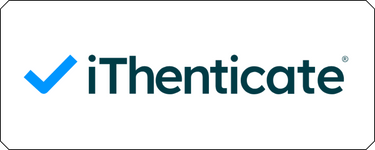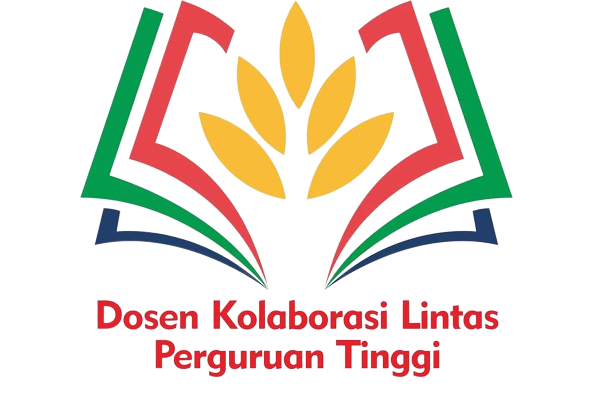Policy Analysis of Institutional Capacity Building at the Department of Women's Empowerment and Child Protection in Bintan Regency
DOI:
https://doi.org/10.69812/jgs.v1i2.51Keywords:
Implementation, Capacity Building, PolicyAbstract
This study aims to analyze the institutional capacity-building policy at the Department of Women’s Empowerment, Child Protection, Population Control, and Family Planning (DP3KB) in Bintan Regency. The background of this research is the importance of institutional capacity building as an effort to strengthen public services and meet community needs in the fields of women’s empowerment and child protection. The research method used is qualitative descriptive with a case study approach. Data collection was conducted through interviews, observations, and document analysis, which were then analyzed using pattern matching techniques and explanation development based on Grindle's capacity development theory. The results of the study indicate that DP3KB faces challenges such as limited human resources, inadequate budget allocation, and suboptimal organizational structures. Nevertheless, efforts to strengthen institutional capacity include staff training, strengthening internal mechanisms, and synergy with other institutions. In conclusion, institutional capacity-building policies encompassing dimensions of human resource development, organizational strengthening, and comprehensive institutional reform are required to improve the effectiveness of DP3KB services in Bintan Regency. Additionally, periodic evaluations of implemented programs are essential to ensure the sustainability and positive impacts of these policies. Effective policy implementation through strategic planning, monitoring, and cross-sector collaboration is expected to realize the organization’s vision and mission in supporting fair and inclusive regional development.
Downloads
References
Akib, H. (2010). Implementasi kebijakan: Apa, mengapa dan bagaimana. Jurnal Administrasi Publik, 1(1), 1–12.
Anggara, S. (2016). Ilmu Administrasi Negara Kajian Konsep, Teori, dan Fakta dalam Upaya Menciptakan Good Governance (B. A. Saebani, Ed.; Cetakan ke-2). CV Pustaka Setia.
Brinkerhoff, D. W., & Morgan, P. J. (2010). Capacity and capacity development: Coping with complexity. Public Administration and Development, 30(1), 2–10. https://doi.org/10.1002/PAD.559
Chaskin, R. R., Brown, P., Venkatesh, S., & Vidal, A. (2017). Building community capacity. In Building Community Capacity. Taylor and Francis. https://doi.org/10.4324/9781315081892
Christia, A., & Ispriyarso, B. (2019). Desentralisasi fiskal dan otonomi daerah di Indonesia. Law Reform, 15(1), 149–136. https://doi.org/10.14710/lr.v15i1.23360
Effendi, B. (2002). Pembangunan daerah otonomi berkeadilan (2nd ed.). Uhaindo Dan Offset.
Fanany, I., Fanany, R., & Kenny, S. (2010). Capacity Building in Indonesia: Building What Capacity? In Challenging Capacity Building. Palgrave Macmillan, London. https://doi.org/10.1057/9780230298057_8
Hudalah, D., Winarso, H., & Woltjer, J. (2010). Policy networking as capacity building: An analysis of regional road development conflict in Indonesia: Planning Theory, 9(4), 315–332. https://doi.org/10.1177/1473095210368776
Jaweng, R. E. (2011). Kritik Terhadap Desentralisasi Asimetris di Indonesia.
Nugroho, R. (2011). Public policy : Dinamika kebijakan, analisis kebijakan, manajemen kebijakan (3rd ed.). Gramedia.
Painter, M., & Pierre, J. (2005). Unpacking policy capacity : issue and themes. In Challenges to State Policy Capacity (pp. 1–18). Macmillan Publishers.
Patton, M. Q. (1990). Qualitative evaluation and research methods. In Research in Nursing & Health (2nd ed., Issue 1). Sage Publication. https://doi.org/10.1002/nur.4770140111
Potter, C., & Brough, R. (2004). Systemic capacity building: A hierarchy of needs. Health Policy and Planning, 19(5), 336–345. https://doi.org/10.1093/heapol/czh038
Purwandi, W. (2006). Evaluasi Kebijakan Peningkatan Kapasitas Pada Institusi Pemerintah Daerah Di Kabupaten Sleman [Universitas Diponegoro]. http://eprints.undip.ac.id/6248/1/wawanpurwandi.pdf
Ratnasari, J. D., Makmur, M., & Ribawanto, H. (2014). Pengembangan Kapasitas Kelembagaan pada Badan Kepagawaian Daerah Kabupaten Jombang. Jurnal Administrasi Publik (JAP), 1(3), 103–110.
Sari, N., Noor, I., & Prasetyo, W. Y. (2014). Pengembangan kapasitas kelembagaan pemerintah daerah dalam meningkatkan kualitas pelayanan perizinan terpadu (Studi pada kantor pelayanan dan perizinan terpadu kabupaten kediri). Jurnal Administrasi Publik (JAP), 2(4), 634–640.
Shah, A., & Thompson, T. (2004). Implementing Decentralized Local Governance: A Treacherous Road Closures. World Bank Publications.
Smith, B. C. (2023). Decentralization: The Territorial Dimension of the State. Routledge. https://books.google.com/books/about/Decentralization.html?hl=id&id=8LjLEAAAQBAJ
Sugiyono, S. (2016). Memahami Penelitian Kualitatif. In Alfabeta. Alfabeta.
Suharyo. (2014). Optimization Of Eradication Of Corruption in a Decentralized Era in Indonesia. RechtsVinding, 3(Desember), 365–380.
Sutopo, H. B. (2002). Metodologi Penelitian Kualitatif (ed. 2). Sebelas Maret University Press.
Vinzant, D. H., & Vinzant, J. C. (1996). Strategy and Organizational Capacity: Finding a Fit. Public Productivity & Management Review, 20(2), 157. https://doi.org/10.2307/3380482
Yin, R. K. (2010). Qualitative research from start to finish. Guilford Press.
Downloads
Published
How to Cite
Issue
Section
License
Copyright (c) 2024 Defitriyani Defitriyani

This work is licensed under a Creative Commons Attribution-ShareAlike 4.0 International License.
You are free to:
- Share — copy and redistribute the material in any medium or format for any purpose, even commercially.
- Adapt — remix, transform, and build upon the material for any purpose, even commercially.
- The licensor cannot revoke these freedoms as long as you follow the license terms.
Under the following terms:
- Attribution — You must give appropriate credit, provide a link to the license, and indicate if changes were made . You may do so in any reasonable manner, but not in any way that suggests the licensor endorses you or your use.
- ShareAlike — If you remix, transform, or build upon the material, you must distribute your contributions under the same license as the original.
- No additional restrictions — You may not apply legal terms or technological measures that legally restrict others from doing anything the license permits.















